Natural killer (NK) cells-related gene signature reveals the immune environment heterogeneity in hepatocellular carcinoma based on single cell analysis
- PMID: 39231877
- PMCID: PMC11374944
- DOI: 10.1007/s12672-024-01287-4
Natural killer (NK) cells-related gene signature reveals the immune environment heterogeneity in hepatocellular carcinoma based on single cell analysis
Abstract
The early diagnosis of liver cancer is crucial for the treatment and depends on the coordinated use of several test procedures. Early diagnosis is crucial for precision therapy in the treatment of the hepatocellular carcinoma (HCC). Therefore, in this study, the NK cell-related gene prediction model was used to provide the basis for precision therapy at the gene level and a novel basis for the treatment of patients with liver cancer. Natural killer (NK) cells have innate abilities to recognize and destroy tumor cells and thus play a crucial function as the "innate counterpart" of cytotoxic T cells. The natural killer (NK) cells is well recognized as a prospective approach for tumor immunotherapy in treating patients with HCC. In this research, we used publicly available databases to collect bioinformatics data of scRNA-seq and RNA-seq from HCC patients. To determine the NK cell-related genes (NKRGs)-based risk profile for HCC, we isolated T and natural killer (NK) cells and subjected them to analysis. Uniform Manifold Approximation and Projection plots were created to show the degree of expression of each marker gene and the distribution of distinct clusters. The connection between the immunotherapy response and the NKRGs-based signature was further analyzed, and the NKRGs-based signature was established. Eventually, a nomogram was developed using the model and clinical features to precisely predict the likelihood of survival. The prognosis of HCC can be accurately predicted using the NKRGs-based prognostic signature, and thorough characterization of the NKRGs signature of HCC may help to interpret the response of HCC to immunotherapy and propose a novel tumor treatment perspective.
Keywords: Hepatocellular carcinoma; Immunotherapy; Machine learning; Natural killer cells; Precision therapy; Prognostic signature.
© 2024. The Author(s).
Conflict of interest statement
The authors declare no competing interests.
Figures

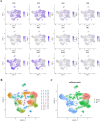



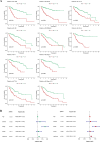
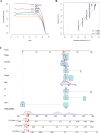
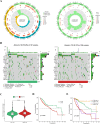
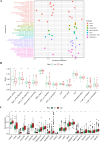

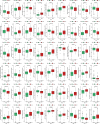
Similar articles
-
The Novel-Natural-Killer-Cell-Related Gene Signature Predicts the Prognosis and Immune Status of Patients with Hepatocellular Carcinoma.Int J Mol Sci. 2023 May 31;24(11):9587. doi: 10.3390/ijms24119587. Int J Mol Sci. 2023. PMID: 37298537 Free PMC article.
-
Comprehensive single-cell and bulk transcriptomic analyses to develop an NK cell-derived gene signature for prognostic assessment and precision medicine in breast cancer.Front Immunol. 2024 Oct 23;15:1460607. doi: 10.3389/fimmu.2024.1460607. eCollection 2024. Front Immunol. 2024. PMID: 39507529 Free PMC article.
-
A Novel Prognostic Signature of comprising Nine NK Cell signatures Based on Both Bulk RNA Sequencing and Single-Cell RNA Sequencing for Hepatocellular Carcinoma.J Cancer. 2023 Jul 16;14(12):2209-2223. doi: 10.7150/jca.85873. eCollection 2023. J Cancer. 2023. PMID: 37576389 Free PMC article.
-
Natural killer cell dysfunction in hepatocellular carcinoma and NK cell-based immunotherapy.Acta Pharmacol Sin. 2015 Oct;36(10):1191-9. doi: 10.1038/aps.2015.41. Epub 2015 Jun 15. Acta Pharmacol Sin. 2015. PMID: 26073325 Free PMC article. Review.
-
Natural Killer Cells and T Cells in Hepatocellular Carcinoma and Viral Hepatitis: Current Status and Perspectives for Future Immunotherapeutic Approaches.Cells. 2021 May 28;10(6):1332. doi: 10.3390/cells10061332. Cells. 2021. PMID: 34071188 Free PMC article. Review.
References
-
- Llovet JM, Kelley RK, Villanueva A, Singal AG, Pikarsky E, Roayaie S, et al. Hepatocellular carcinoma. Nat Rev Dis Primers. 2021;7(1):6. - PubMed
LinkOut - more resources
Full Text Sources
